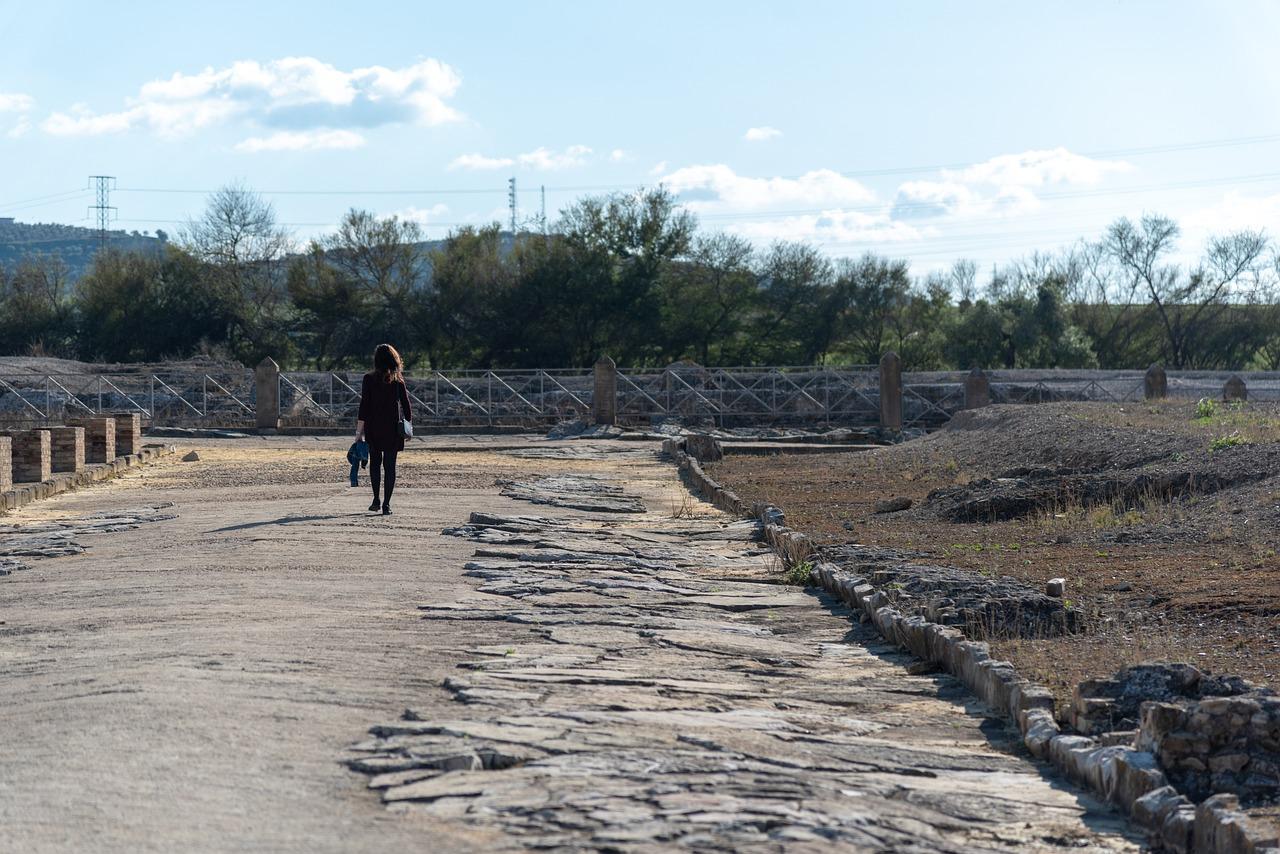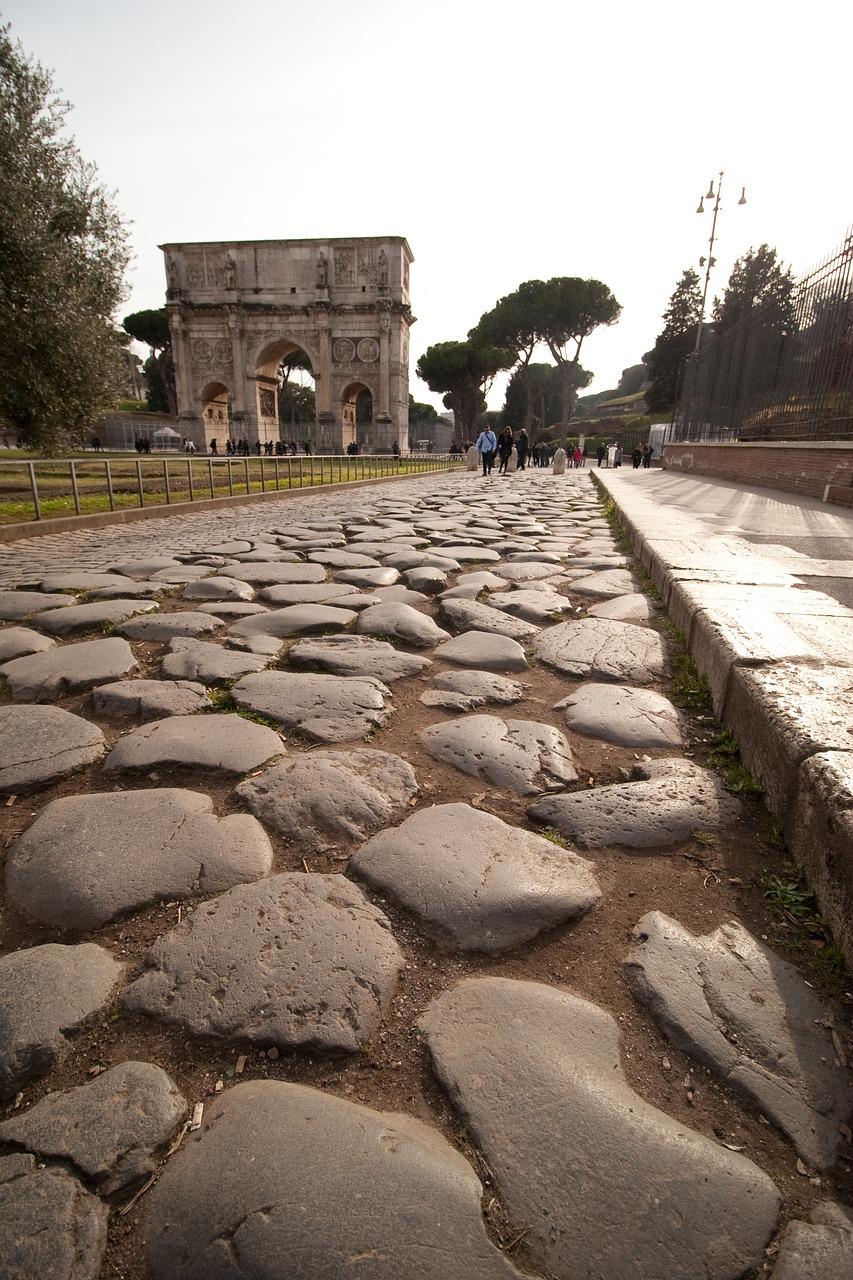The Roman Empire, known for its remarkable innovations and unmatched engineering prowess, continues to captivate us even in the modern age. From their impressive architecture to their strategic military tactics, the Romans left an indelible mark on history. One aspect of their infrastructure that still intrigues us is their vast network of roads. But, are these ancient Roman roads still in use today? In this blog post, we will dive into the history of these roads, their purpose, and whether they continue to serve a practical function in the 21st century.
The Romans were renowned for their forward-thinking nature and ability to devise efficient solutions. Their roads were no exception. These masterfully crafted highways, known as “viae” in Latin, were ingeniously designed to connect various parts of the vast Roman Empire. They spanned across continents, linking cities, towns, and military outposts, enabling trade, communication, and military supply lines. However, their significance extends far beyond their initial purpose and plays a surprising role even in today’s modern world.
Join us as we unravel the secrets of the ancient Roman roads, explore their enduring legacy, and discover the incredible ways in which they continue to impact our lives in ways we might not even realize.

Are Ancient Roman Roads Still Used Today?
When you think of ancient Roman engineering, images of grand coliseums and aqueducts may come to mind. But did you know that some of their roads still exist and are even used today? Yes, you read that right. In this subsection, we’ll explore the fascinating world of ancient Roman roads and their enduring legacy.
Roman Roads: Built to Last
Back in ancient Rome, the Romans were not just skilled conquerors and law-makers. They were also master builders. Their roads, known as “viae,” were no exception. Constructed using a combination of meticulous planning, engineering prowess, and plain old Roman muscle, these roads were built to withstand the test of time.
A Marvel of Engineering
The Romans didn’t settle for mediocre roads; they went above and beyond. Their roads were built with multiple layers, starting with a foundation of packed earth or gravel, followed by layers of larger rocks, smaller stones, and finally, a smooth layer of tightly fitted paving stones. This multi-layered approach not only provided durability but also allowed for efficient drainage.
Modern-Day Survivors
Fast forward to the present day, and you’ll find that some ancient Roman roads are still in use, proving that they truly stood the test of time. One notable example is the Appian Way, also known as the “Queen of Roads.” This ancient highway, stretching over 350 miles from Rome to southeastern Italy, has been continuously used for over two millennia.
From Chariots to Cars
Ancient Roman roads were designed for chariots and foot traffic, but today, they accommodate a slightly different mode of transportation: cars. The same roads that once witnessed the clatter of hooves and the march of Roman soldiers now carry the hum of modern engines.
A Trip Down History Lane
Driving on an ancient Roman road is like taking a journey through history. As you traverse the ancient stones, it’s easy to imagine the bustling activity of bygone eras. You might even find yourself half-expecting to stumble upon a Roman centurion or a toga-clad senator along the way.
Uniting the Present with the Past
Not only do these ancient roads serve as physical connections between cities, but they also bridge the gap between the present and the past. They remind us of the ingenuity and craftsmanship of our predecessors, sparking a sense of wonder and awe.
So, whether you have the opportunity to walk, cycle, or drive on an ancient Roman road, consider yourself lucky. These remnants of a bygone era are not just historical artifacts but living testaments to the lasting impact of Roman engineering. So, the next time you find yourself on one of these ancient thoroughfares, take a moment to appreciate the legacy beneath your wheels. Roman roads may have been built thousands of years ago, but they continue to carry us forward into the future.
Keywords: Ancient Roman roads, enduring legacy, Roman engineering, viae, multi-layered approach, Appian Way, Queen of Roads, modern-day survivors, cars, history lane, uniting the present with the past, Roman centurion, sense of wonder and awe, living testaments, lasting impact.

FAQ: Are Ancient Roman Roads Still Used Today?
Ancient Rome was a remarkable civilization that left a lasting impact on the world. Their engineering marvels, such as the famous Roman roads, were undoubtedly one of their greatest achievements. It’s intriguing to ponder whether these ancient roads are still in use today and how they have stood the test of time. In this FAQ-style blog post, we’ll explore some common questions about ancient Roman roads and shed light on their present significance.
Why Were the Romans So Ingenious
The Romans were incredible architects, engineers, and thinkers. With their curious minds and innovative spirit, they developed advanced techniques in construction, mathematics, and many other fields. Their ability to think outside the box and their dedication to progress certainly contributed to their brilliance.
What Led to the Emergence of the Roman Empire
The Roman Empire arose from the city of Rome’s gradual expansion and its conquest of neighboring territories. This rise to power was also facilitated by strategic alliances, military prowess, and effective governance. Ultimately, the Roman Empire became a dominant force in the ancient world.
What Was Transportation Like in Ancient Rome
Transportation was essential to the functioning of the Roman Empire. The Romans built an extensive network of roads that spanned over 250,000 miles, connecting far-flung regions of their empire. These roads facilitated trade, the movement of military forces, and the exchange of ideas.
Did Rome Invent Democracy
While the Romans did not invent democracy as we know it today, they did influence its development. The system of government in ancient Rome was a republic, where citizens could vote and participate in decision-making. This representative form of governance laid the foundation for democratic principles that we cherish today.
Are Ancient Roman Roads Still in Use Today
Despite the passage of centuries, some ancient Roman roads still exist. Though they may not serve the same purpose as they once did, their remnants continue to captivate and amaze us. Let’s delve further into why these roads have stood the test of time.
What Are the Most Significant Contributions of Rome to the Modern World
The Roman Empire’s legacy is visible in many aspects of our daily lives. Their contributions include architecture, engineering, law, language, and even the concept of citizenship. The impact of their innovations can be easily traced in modern society, making Rome’s mark irrefutable.
Why Was the Roman Army So Formidable
The formidable strength of the Roman army was attributed to several factors. Their disciplined and highly trained soldiers, sophisticated tactics, and formidable weapons all played a role. Additionally, the Roman emphasis on infrastructure, such as the roads, enabled swift movement of troops, making their military even more potent.
What Were the Roads of Rome Constructed to Connect
The Roman roads were built with the purpose of connecting various parts of the vast Roman Empire. These roads linked major cities, military outposts, trade centers, and other important locations. The network of roads allowed for efficient communication, trade, and the projection of Roman power throughout the empire.
What Was Rome’s Greatest Contribution to History
Determining Rome’s greatest contribution is a challenging task, given their numerous achievements. However, the establishment and growth of the Roman Empire itself is undoubtedly its crowning glory. The empire’s influence and enduring impact on Western civilization make it a paramount contribution to history.
What Did a Roman House Look Like
A typical Roman house, known as a domus, had an atrium at its center, surrounded by various rooms and living spaces. These houses were often adorned with beautiful frescoes, intricate mosaics, and luxurious furnishings. The architecture was designed to reflect the Romans’ taste for grandeur and extravagance.
In conclusion, the ancient Roman roads, despite their age, continue to leave us in awe of the ingenuity and foresight of the Romans. Their enduring presence is a testament to their engineering prowess and their impact on modern transportation systems. Exploring ancient Roman roads allows us to connect with history in a tangible and fascinating way.
So the next time you find yourself walking along a road that has a mysterious aura, think about the possibility that you might be following in the footsteps of an ancient Roman traveler.
